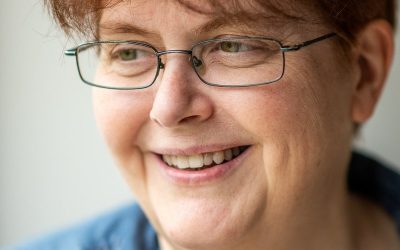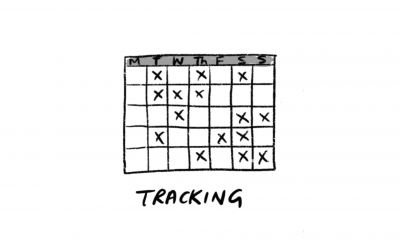“Eat, Pray, Love would not exist without The Artist’s Way.” Elizabeth Gilbert isn’t the only writer who credits their success to Julia Cameron’s The Artist’s Way. With a variety of fans from authors Patricia Cornwell and Russell Brand to songwriters Pete Townshend and Alicia Keys The Artist’s Way is the source of many creative breakthroughs and bestsellers. Find out what’s involved in this 12-week course and how it can help you write.
Elizabeth Gilbert was mid-divorce and in a terrible depression when someone gave her a copy of The Artist’s Way. It changed her life.
The 12-week course gave her the confidence to write Eat Pray Love a travel memoir that chronicled her personal journey to find love and happiness. It became an international bestseller, translated into over thirty languages, with over 12 million copies sold worldwide, and was made into a film starring Julia Roberts. The book was such a phenomenon that Time Magazine named Gilbert as one of the 100 most influential people in the world.
As endorsements go, you can’t get much higher praise than Gilbert crediting her success to The Artist’s Way. While the origin story of Eat Pray Love is a neat soundbite, the reality involves many twists and turns, and as we’re talking about writing, much hard work.
“I’ve said this before and I’ll say it again, Eat Pray Love would not exist without The Artist’s Way.” Elizabeth Gilbert
Julia Cameron’s The Artist’s Way
Written in 1993 The Artist’s Way is a self-guided course written by ‘active artist’ Julia Cameron. She is the author of forty books, fiction and non-fiction, and is also a novelist, playwright, songwriter and poet, with multiple credits in theatre, film and television. The book began life as a creativity workshop. However, Cameron is clear that she doesn’t teach creativity, instead, she says, “I teach people to let themselves be creative.”
Cameron had early success as a writer, and was a player in the 1970s US film scene, recognised for re-writing Oscar-winning film Raging Bull. However, after a period of excess and in thrall to the notion of the self-destructive artist she gave up drinking and was the confronted by the reality of creating sober.
Cameron started working with blocked writers and artists, took up a teaching position in New York, and developed exercises that helped people discover and recover their creative selves. Her course spread word-of-mouth and rather than photocopying and mailing it out herself, she wrote and published The Artist’s Way. A success in its own right with over 4 million copies sold, it has birthed many more bestsellers and placed Cameron as a creativity guru and midwife to artists’ work the world over.
In the introduction to the book she writes: “No matter what your age or life path, whether making is your career or your hobby or your dream, it is not too late or too egotistical or too selfish or too silly to work on your creativity.”
>> Read more: The complete guide to writing accountability – hold yourself to account and use others to help you achieve your writing goals
The Artist’s Way basic principles
Before you get into the course, the books start with a set of basic principles, which Cameron calls spiritual electricity. These 10 principles are designed to help you form an alliance, artist-to-artist with the Great Creator. They include the idea that creativity is the natural order of things, that creativity is a gift from God, and that we need to be open to it in order to change, grow and create.
We’re only on page 3 of the book, and that is where many people – myself included – give up. Acceptance of, or tolerance for, Cameron’s notion of creativity is a litmus test for whether this is the book for you. I bought my copy 15 years ago, and despite its many famous advocates, and witnessing the transformation it had for friends and fellow writers, I was stuck.
Until this year, when the pandemic turned the world upside down. My openness to the Great Creator wasn’t a bolt of lightning moment, but instead a quieter need to shut out the noise of a world on fire.
I had got into a habit of doom-scrolling the news in bed. I would start my day, as so many of us do, by picking up my phone and opening myself to a deluge of disaster and rising death counts. I was struggling to make sense of everything, as well as fighting my own battles for my business, family and community. I decided to stop scrolling and start writing morning pages. It was a simple swap. Instead of picking up my phone, I’d reach for a note pad and pen and start freewriting.
After a few weeks of sleepy scribbling I had the beginnings of new habit. I wanted to level up, find some structure and guidance. I dusted down my yellowed copy of The Artist’s Way and in May 2020, I accepted Cameron’s spiritual take on creativity, and began the 12-week course.
A 12-week course in creativity
The course kicks off with a commitment to do the work. Cameron devised a written contract for her early students, a version of which is printed in the book. You need to read it, sign it – but it is not up for negotiation. You commit to the course, the weekly tasks, the basic tools of daily morning pages and weekly artist’s date (more on these below) and the self-care to support your journey.
Once your commitment is sealed, you work week-by-week through the chapters doing a variety of exercises. Each week has a theme of ‘recovering’ an element of creativity, including safely, identity, possibility and abundance. There’s series of tasks, many of which repeat as you go through the 12-weeks, for example, exploring what creativity meant to you when you were young and what imaginary lives you could lead. With around 150 exercises Cameron does not expect you to do them all but the repetition is where the power lies.
>> Read more: How small steps lead to great progress
Elizabeth Gilbert explains how Cameron is asking you “various interpretations of: ‘if there was one talent that you wish you had, what would it be?’ And she keeps asking these questions in various ways and you answer them again and again and again. When you’re done doing The Artist’s Way, you go back and you read through all your journals and you see what keeps showing up because that’s your clue as to what the next direction of your life was.”
“When you’re done doing The Artist’s Way, you go back and you read through all your journals and you see what keeps showing up because that’s your clue as to what the next direction of your life was.” Elizabeth Gilbert
Connecting with your creative consciousness
When I first heard about Gilbert’s experience with The Artist’s Way, I assumed it was much like a creative writing exercise, where she developed the idea for Eat Pray Love while journaling or free writing.
I had fallen for the myth of creative epiphany. Ideas don’t arrive fully formed but are uncovered, slowly, over time and with persistence. As Gilbert said:
“What kept showing up was, apparently, I really want to learn how to speak Italian because it was on almost every page. I wish I could speak Italian. And this is the beautiful thing about the way that the mind hides things from us, I literally didn’t know that about myself. I had no idea that it was such a big deal in my life that apparently my consciousness really wanted to learn how to speak Italian.”
Once she had uncovered her sub-conscious desire to speak Italian, Gilbert turned that insight into action by signing up for Italian lessons at night school in New York. “I call it night school for divorced ladies,” she said, “because it was all a bunch of divorcee women taking classes to better themselves. And I was one of them.”
While she started with no plan, she soon fell in love with the language and was determined to master it. The only way to get better at Italian was to travel to Italy. Gilbert said:
“That was the beginning of me creating the idea of going and spending that year traveling, starting in Italy and then going to India to meditate and then to Indonesia. It would’ve never come up. So I can’t overstate what you can get out of doing The Artist’s Way.”
Gilbert’s bestselling book started not is an idea to write a memoir, but with longing to learn a language – not what you’d expect to seed an idea. She’s life-long advocate of the course and does it in between projects to discover how she’s changed and what direction her creativity should take next.
>> Read more: 4 things to learn from the daily rituals of great writers
The basic tools of The Artist’s Way
In addition to the weekly exercises, there are two basic tools: morning pages which are done daily and artist’s dates which are weekly.
Each week, Cameron checks in to see if you have done both practices and if not, what got in the way. Cameron didn’t invent these practices but branded them, created a course to support them, a system of accountability to make sure you do them, and movement of devotees. That’s part of her genius, introducing tools to a whole new audience. Let’s start with morning pages, the “bedrock tool” of creative recovery.
1. Morning pages
In her 1934 book Becoming a Writer Dorothea Brande introduced the practice by instructing writers to “rise half an hour, or a full hour, earlier than you customarily rise. Just as soon as you can – and without talking, without reading the morning’s paper, without picking up the book you laid aside the night before – begin to write.” That’s ‘morning’ clarified; get up early and write without any distraction.
Cameron nails what she means by ‘pages.’ “Put simply,” she said, “three pages of longhand writing, strictly stream-of-consciousness.”
Many writing exercises focus on producing a specific output; in a creative writing class this might be done against the clock and then shared for judgement. Pages are the complete opposite.
Cameron reassures those about to start this practice that there is no wrong way to do morning pages. She explains:
“They are not high art. They are not even ‘writing.’ They are about anything and everything that crosses your mind – and they are for your eyes only. Morning Pages provoke, clarify, comfort, cajole, prioritize and synchronize the day at hand. Do not over-think morning pages: just put three pages of anything on the page…and then do three more pages tomorrow.
>> Read more: A guide to writing morning pages
Low stakes writing
This low stakes approach removes many of the psychological barriers we face and this is central to Cameron’s concept of creative recovery. She sees pages as a guide to inner wisdom, a way to deal with problems and difficult situations. Her advice is to “go to the pages and ask for guidance”. Having a morning pages practice is not just about finding temporary solutions, and overcoming creative blocks; they fundamentally impact on you as a writer, long term, as was the case with Elizabeth Gilbert uncovering her desire for Italian which led to Eat Pray Love.
Morning pages are to be done every day, so over time it becomes a habit, a practice that forms part of your writing life.
“Just write three pages… and write three more pages the next day.” Julia Cameron
2. Artist Dates
The second tool is the artist date, a once-weekly, solo expedition to explore something that interests you. Cameron explains, that it is: “a block of time, perhaps two hours weekly, especially set aside and committed to nurturing your creative consciousness, your inner artist.”
Cameron calls them assigned play, and encourages you to see them less about mastery and more about mischief. “Artist dates fire up the imagination,” she said. “They spark whimsy. They encourage play. Since art is about the play of ideas, they feed our creative work by replenishing our inner well of images and inspiration. When choosing an Artist Date, it is good to ask yourself, ‘what sounds fun?’ – and then allow yourself to try it.”
Some of the writers we work with are put off by the word ‘artist’. They are not artists – writing is their job, a professional skill, writing is a grind not a creative pursuit. I would argue that regardless of whether you’re writing for fun or for your career, all writers need creative input. You choose what fires you up whether it’s watching the sunset from a beach, taking an online tour of The Louvre art gallery, or cracking the spine on a philosophical tract.
Intentional pre-commitment
It’s hard to find a two-hour slot for creative self-care, so you really need to consider how to spend the time and book them in. And that is why artist’s dates are so effective – they are a form of pre-commitment. You have to be intentional about when you do it and what you do. It is a deliberate break to recharge, not a form of in the moment procrastination and distraction. The pay-off can be huge, helping us to reset, refresh ourselves and connect with our writing.
Cameron is very strict that they should be done alone, advising: “the artist date is an excursion, a play date you pre-plan and defend against all interlopers. You do not take anyone on this artist date but you and your inner artist, a.k.a. your creative child. That means no lovers, friends, spouses, children – no taggers on of any stripe.”
While artists dates are meant to be solitary pursuits, art is not. After Cameron closes off the last week of the course, she discusses next steps in the appendix. She believes that success occurs on clusters and suggests how we can create communities to support our onward creative journey.
Whether you dive in with the full 12-week course, give morning pages a go, book yourself a creativity date or form a creative cluster, let us know when you have the next Eat Pray Love on your hands.
* Elizabeth Gilbert was interviewed by Tim Ferriss for his podcast
[et_bloom_inline optin_id=optin_7]




